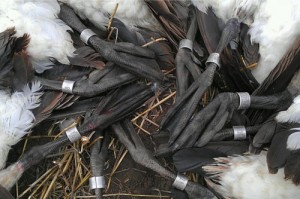The results are in from the 2012 Waterfowl Breeding Population and Habitat Survey and waterfowl hunters have a significant reason celebrate. The recorded 46.5 million birds is up 7% over 2011, 43% above the long-term average and the highest ever recorded! Yes, you heard correctly, the highest waterfowl populations ever recorded. While pond counts were down significantly over the extremely wet 2011, pond counts remained 9% above the long-term average.
Hello folks, and, as always, welcome to Waterfowler.com.
The 2012 Waterfowl Breeding Population and Habitat Survey results raise the bar on population and habitat management with an all time record number of birds. While bag limits are set to manage a no-net loss in populations, it is obvious that low harvest years, such as 2011, can boost overall waterfowl numbers in a big way.
Teal numbers continue to skyrocket with green-winged teal up 20% over last year and 74% above the long-term average. Blue-winged teal are up 3% over last year and rest at a whopping 94% above the long-term average. Mallard numbers settled in at 15% above last year and top out at 40% above the long-term average.
Pintail and wigeon were the only species that remain below the long-term average, with pintail numbers down 22% over 2011 survey results and -14% on the long term average. Wigeon were up 3% over last year but remain 17% below the long-term average.
The published results and other detailed reports are available online in .PDF format at Flyways.us (link below). While our summary covers the highlights, Waterfowler.com recommends that out readers review the detailed document for regional survey data and detailed information on the black duck survey.
While the numbers are clearly astounding news, as waterfowl hunters realized last year, big numbers don’t always equate to outstanding harvests and record breaking seasons. Clearly, the mild winter and drought conditions of 2011 played a vital role in hunter success. As we look at the current drought monitor for 2012 (link at right), habitat conditions will need to improve significantly across the US before the early seasons begin in less then two months. While record numbers of teal will begin their migration near the first of September, if you don’t have water, those numbers will be of little importance to your success. In short, we need rain, desperately before then in many states.
Waterfowler.com encourages our members to begin their preparations for the coming season. During the month of July a number of states host drawings for public access and blind construction permitting, so be sure to check federal, state and county management offices for opportunity in your area.
Until our next report, spread the news. Ducks are back – in record breaking numbers.






